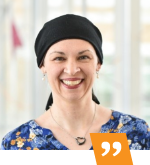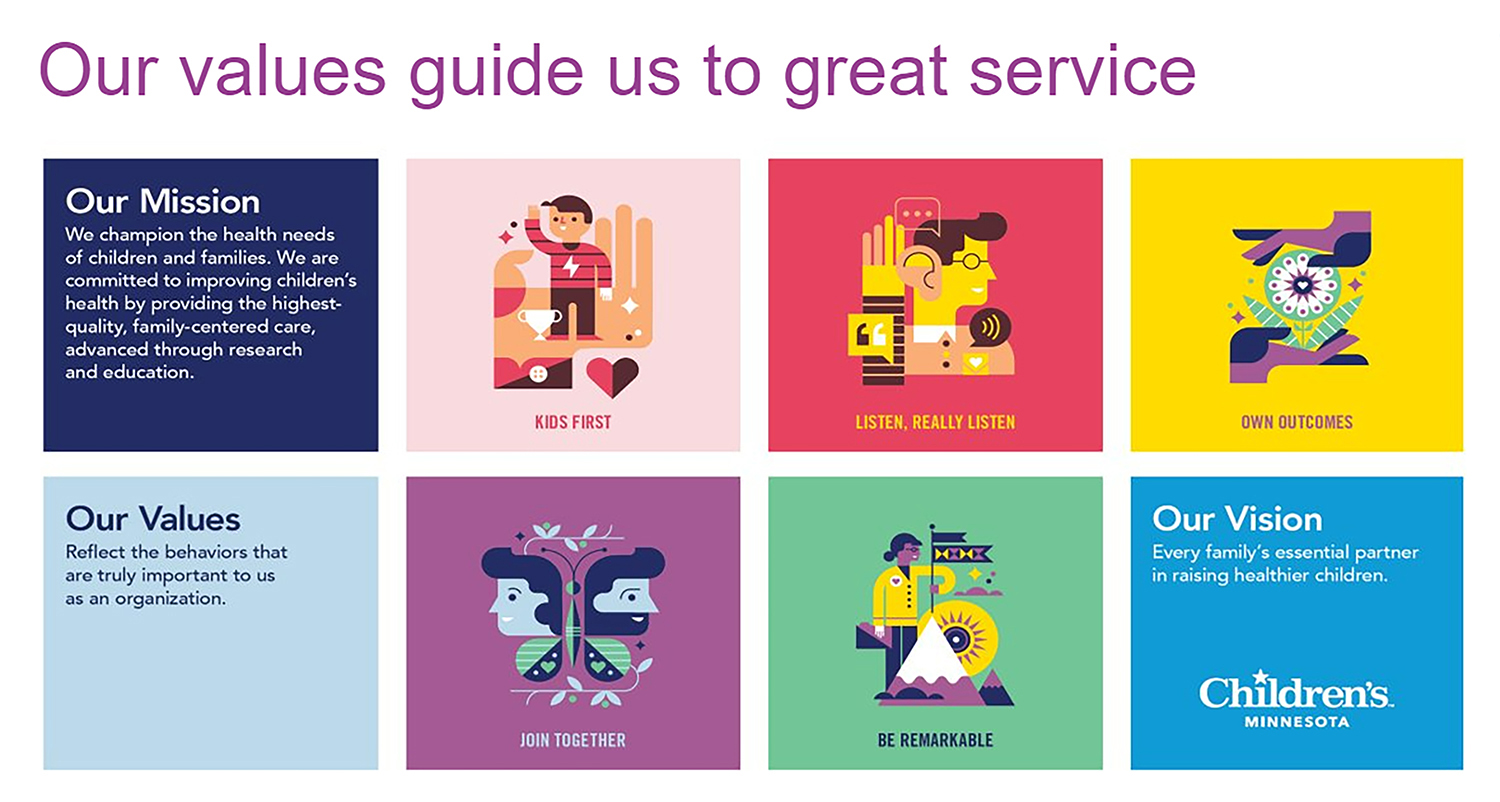CASE STUDY
CASE STUDY
CASE STUDY

Improving parental involvement for better NPS at Children’s Minnesota

 Children’s Minnesota is one of the largest pediatric health systems in the United States and the only one in Minnesota devoted exclusively to children. An independent and not-for-profit system for more than 100 years, Children’s Minnesota offers more than 60 pediatric specialties through its two hospitals, multiple specialty centers and clinics throughout the metro area. The Kid Experts® at Children’s Minnesota focus on providing the best experiences for patients and families in their care through innovation, research, and compassion.
Children’s Minnesota is one of the largest pediatric health systems in the United States and the only one in Minnesota devoted exclusively to children. An independent and not-for-profit system for more than 100 years, Children’s Minnesota offers more than 60 pediatric specialties through its two hospitals, multiple specialty centers and clinics throughout the metro area. The Kid Experts® at Children’s Minnesota focus on providing the best experiences for patients and families in their care through innovation, research, and compassion.
In the fall of 2022, Children’s Minnesota leaders set new goals to improve staffing shortages and use NRC Health data to help identify how to improve patient experience scores. The goal was for team members to consistently communicate with patients’ families and live their values with each encounter.
Opportunity
Opportunity
Infectious Disease clinic visits include comprehensive discussions regarding management and treatment plans, disease mechanisms, and potential alternate diagnoses in cases where the diagnosis may not be clear. One of the metrics that they found needed particular attention was the ‘received enough information’ metric. For Medical Imaging, one of the biggest detractors was that a test procedure didn’t begin on time because of staffing shortages, impacting how quickly they could test patients. Leaders built strategies around these goals to achieve remarkable results to provide the best possible care and empower care teams.
Infectious Disease Group Opportunity and Results

Recognizing a gap
Recognizing a gap
Visits to the Infectious Disease clinic involve in-depth conversations with patients and families, and strategies around unique treatment plans. It can be a complicated process. Children’s Minnesota recognized a gap in whether families felt they were receiving sufficient information, so teams focused on how to ensure patients and families feel heard and understood.
Shanna McCann, Patient Experience Coach, explains that the goal is for team members to consistently communicate with patients’ families and live their values with each encounter.
“We work with each and every patient and family to understand them as a unique individual and deliver that unique experience,” says McCann. “We connect and interact in those micro moments that make experience come alive for patients and families.”

“We work with each and every patient and family to understand them as a unique individual and deliver that unique experience,” says McCann. “We connect and interact in those micro moments that make experience come alive for patients and families.”

“We work with each and every patient and family to understand them as a unique individual and deliver that unique experience.”
-Shanna McCann, Patient Experience Coach, Children’s Minnesota
“As Infectious Disease providers, our group has the privilege of caring for very complex patients whose illnesses, understandably, require significant education, ” says Dr. Anu Kalaskar, Medical Director of the Infectious Disease program.
Kalaskar says that most of the information provided during visits was given through verbal communication, and given the amount and depth of the information, they realized it might be difficult to ensure that patients and their families felt as if they were receiving all the information they wanted to receive.
One strategy they chose to focus efforts on was creating patient-education materials for the top three diagnoses seen in the Infectious Disease clinic. As a group they created patient handouts, reviewed them, and made them available in their institutional patient handout system and EMR. They set a goal to include the patient handout with the discharge paperwork that families received at the end of their clinic visits and were able to meet that goal by the end of the year.


“It’s easy for some information to get lost in the shuffle, or for misunderstandings or miscommunication to arise, so our main focus was on whether they received enough information.”
-Dr. Anu Kalaskar, MD, Medical Director, Infectious Disease Program, Children’s Minnesota
“Given the complexity of our patients and the severity of their illnesses, all of that really requires a lot of education for families to understand the disease process and what to expect during the management of an infection,” Kalaskar says. “It’s easy for some information to get lost in the shuffle, or for misunderstandings or miscommunication to arise, so our main focus was on whether they received enough information.”
Radiology Department Opportunity and Results

Improving communication with patients, families, and care teams
Improving communication with patients, families, and care teams
Guided by The Children’s Way values in action, Children’s Minnesota’s Radiology department focuses on improving the patient experience by using the five AIDET communication behaviors (Acknowledge, Introduce, Duration, Explanation, and Thank You) as a template of how to talk and interact with patients and families—whether that’s updating wait times or explaining what happens in the process of getting an X-ray.
“One of our biggest detractors is that a test procedure didn’t begin on time, and one of our biggest issues right now is staffing shortages, impacting how quickly we can get to some of the patients,” says Ken Nordberg, System Director of Medical Imaging and Biomedical Services. “Getting in and communicating wait times is a big deal when we have those shortages. Implementing AIDET, we’ve had an opportunity to improve fairly dramatically and quickly. We aim to personalize the interactions to patient and family needs; we don’t want things to come out scripted, because it sounds fake and planful.”
Nordberg says that remembering to just use plain English is important, because doctors can get into technical terms quickly, especially in Medical Imaging. Understanding that, the team now tries to phrase concepts in plain verbiage for patients and their families.
Some strategies they use to reinforce change are having reminder posters in break rooms and tech work areas, or having the leaders discuss the importance of AIDET during employee rounding and engagement activities. Nordberg says that recognizing staff or doing spot-coaching in the moment is easy and can also help improve the patient experience.
“We share patient comments with the staff, especially if they call out certain staff members through our Kudos employee recognition program here,” he says. “I showed some of my managers the other day the new easy button within the NRC report, where we can directly forward the comment to staff. You look at 88%, 90%, or 95%, depending on the location, and our scores of nines and tens are pretty positive. Our target is moving the sevens and eights to nines and tens.
“Unhappy staff and low morale can’t pull off a great patient experience,” says Nordberg. “One of my big focuses with my teams, especially through this staffing crisis that we’ve been having, is employee engagement. We can’t do the patient experience without employee engagement being first.”

“Unhappy staff and low morale can’t pull off a great patient experience,” says Nordberg. “One of my big focuses with my teams, especially through this staffing crisis that we’ve been having, is employee engagement. We can’t do the patient experience without employee engagement being first.”

“One of my big focuses with my teams…is employee engagement. We can’t do the patient experience without employee engagement being first.”
-Ken Nordberg, System Director of Medical Imaging and Biomedical Services, Children’s Minnesota
Leveraging NRC Health Tools

Children’s Minnesota sets goals with each of their departments using the Priority Matrix and Department Summaries—an integrated part of the NRC Health Experience platform—to help them hone in on what is most important. This drives net promoter score and benchmarking, McCann says, which helps teams check in on their own performance.
“Sometimes we really want to practice just improving on our own score, but it is helpful to see what those other benchmarks are, out there in the industry, to help guide us to see if we are on track or how we can improve,” McCann says. “We’re starting to explore the scores by demographics. We’re taking a look at our scores, split out by race and ethnicity and language, and starting to bring curiosity to that. We’re going to be leaning into that ‘Did you have enough information?’ metric, so we’re excited to see what we can learn and how we can improve and close a disparity—now that we have good tools within NRC to really help us see those disparities at the question level.”
Human Understanding matters at the market and individual levels because it is a direct pathway to excellent brand perception and an outstanding evaluation of the care experience. NRC Health’s Human Understanding Program is geared toward helping organizations measure market perception and track and improve the care experience. Treating patients as individuals–connecting, listening, and partnering–is the foundation for developing relationships that promote better health and more equitable healthcare.
Learn more
For more on NRC Health’s Human Understanding Program, click here or call 800.388.4264.
©NRC Health. Select images featured in this case study have been provided by Children’s Minnesota and are used with their permission.







